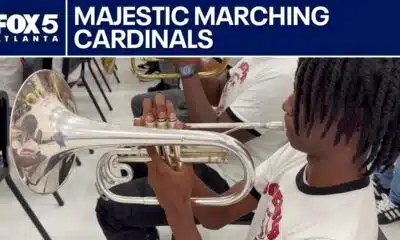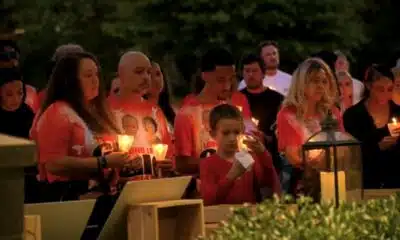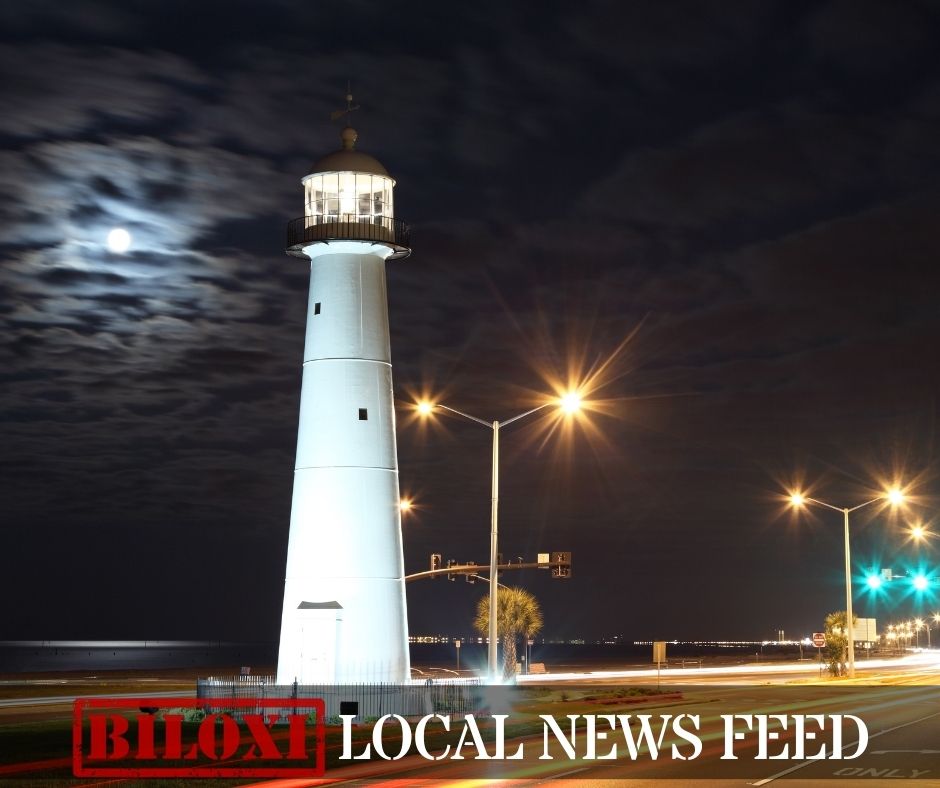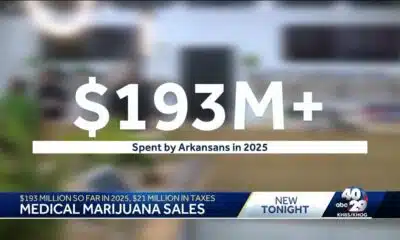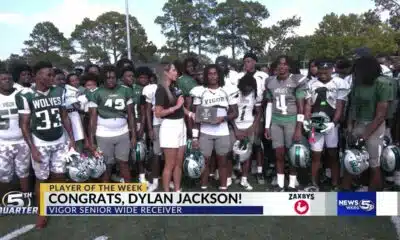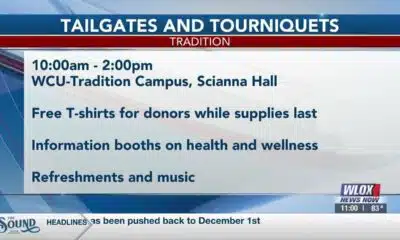News from the South - Virginia News Feed
Democrats seize on enthusiasm gap in 2025 Virginia House races
Democrats seize on enthusiasm gap in 2025 Virginia House races
by Markus Schmidt, Virginia Mercury
March 13, 2025
Stephen Miller-Pitts is making his second bid to unseat Republican Del. Carrie Coyner in the 75th House District, which includes parts of Chesterfield and Prince George counties and the city of Hopewell. The combat veteran, educator, service-disabled small business owner and community activist previously ran against Coyner in 2023, losing by just five percentage points.
Now, he is one of three Democrats vying for his party’s nomination, a testament to the growing Democratic enthusiasm in the district fueled by President Donald Trump’s aggressive mass layoff policies, which have sent shockwaves through Virginia’s workforce and left many families in economic uncertainty.
“I built a lot of great momentum and community engagement with my first run, and I really wanted to build upon what we did two years ago when nobody really was looking at this seat,” Miller-Pitts told The Mercury in a phone interview Wednesday.
He emphasized that the district is “peculiar, because it’s rural, urban and suburban all in one, and those are three different mindsets and constituent bases that need resources and individuals advocating for them at the General Assembly. And so that’s why I’m jumping back in the race again.”
Miller-Pitts’ decision to run again is emblematic of a broader surge in Democratic enthusiasm across Virginia.
As Trump settles into his second term in the White House, Virginia Democrats are seizing the moment, launching campaigns in 92 of the 100 House of Delegates districts, a number that is set to grow in the coming weeks before the April 3 filing deadline for the June 17 statewide primary elections.
Ken Nunnenkamp, executive director of the Republican Party of Virginia, pushed back against the idea that Democrats hold an enthusiasm advantage heading into the 2025 House elections. In a phone interview Wednesday, he dismissed the notion that a higher number of Democratic candidates signals greater energy within the party.
“I’m not ready to say that there’s an enthusiasm gap,” Nunnenkamp said. “The only thing we can say is that Democrats may have had more people file early, but I don’t really think that means much.”
He argued that the number of contested Democratic primaries is not necessarily a sign of strength but rather a reflection of more candidates stepping forward. “The number of people that are running in a Democratic primary doesn’t tell me anything about their enthusiasm, at least not enthusiasm to beat Republicans,” he said. “It just tells me that two people want to run instead of one.”
Nunnenkamp maintained that Republicans remain well-positioned heading into the general election, despite the disparity in early candidate filings. The GOP is fielding candidates in just 63 districts and are only challenging Democrats in 13 of the 51 seats that Democrats currently hold.
This imbalance has sparked optimism among Democratic operatives and grassroots organizers who see 2025 as an opportunity to capitalize on anti-Trump fervor — much like they did in 2017. That year, Democrats flipped 15 House seats, dismantled a Republican supermajority, and came within a single disputed ballot and a random drawing of achieving a 50-50 split in the chamber.
Now, they hope to replicate that energy.
In the 75th District, shifting political trends offer Democrats a glimmer of hope. In 2024, both then-Vice President Kamala Harris, the Democratic presidential nominee, and U.S. Sen. Tim Kaine carried the district, signaling its leftward drift in a now politically diverse region that has increasingly become a battleground.
Running against Lindsey Dougherty and Dustin Wade, Miller-Pitts faces a competitive primary, one of 13 Democratic nomination contests taking place across the state — compared to just four Republican primaries. The crowded field underscores how Democrats are currently embracing intra-party competition as a sign of vitality, while Republicans appear to struggle to recruit candidates.
“The Democratic Party is very data driven,” Miller-Pitts said. “And the data shows that because of the inroads that I believe I made two years ago, the shifting demographics and the diversity of the district, all of that is making it lean more blue.”
Coyner, the district’s Republican incumbent, did not respond to requests for comment.
Primaries as a weapon, not a weakness
The growing number of contested Democratic primaries, rather than signaling division, is a sign of surging excitement among the party’s base, said Del. Dan Helmer, D-Fairfax, the campaigns chair for the House Democratic Caucus.
“So much of this is organic and a reaction to Elon Musk and Donald Trump doing everything they can to destroy the lives and livelihoods of Virginians and bring the country down with them,” Helmer said. “And we are seeing the reaction to that in real time.”
Rather than draining party resources ahead of the general election, Helmer argues that a competitive primary season will only strengthen Democratic chances in November.
“I think that there is just incredible Democratic enthusiasm right now, and these primaries are a reflection of that Democratic enthusiasm,” he said.
“Primaries often make our candidates stronger, they get their names out there, and we think the enthusiasm that we’re seeing is reflected in the fact that there are primaries in districts against what were previously thought to be strong Republican candidates.”
Helmer noted that in recent months Democrats have aggressively expanded their footprint across Virginia.
“We have mounted expansive recruiting efforts,” he said.
“There are 59 House districts that were won by Kamala Harris, and we’re running candidates in districts that Trump won. We believe that because of the unwillingness of House Republicans to stand up and make sure that we protect Virginians, to not stand up for Virginia, there is going to be a significant political penalty and there ought to be.”
But Nunnenkamp dismissed the idea that Democratic primaries signal enthusiasm, arguing instead that they highlight deep divisions within the party.
“I do hear a lot of noise on social media, but I don’t think we’re seeing nearly the level of Democrat enthusiasm that would be necessary for them to have a good year,” he said. “I think they have a serious problem in their own party, and they’re divided on a lot of things.”
Nunnenkamp contended that Democrats have relied on opposing Trump for years but now struggle to define their platform.
“For eight years, Democrats have campaigned on one thing — ‘Trump bad,’” he said. “And now that he has won, voters are going to get to look at what the actual Democrat platform is aside from just hating Trump.”
Rather than a show of strength, Nunnenkamp suggested that competitive Democratic primaries in key districts reveal ideological fractures.
“People just can’t agree on things,” he said. “Instead of enthusiasm, we are actually going to see a lot of negativity and more infighting.”
He predicted Democrats would struggle to unite behind a clear message. “I think we’re already seeing the beginnings of a massive fracture on the left,” Nunnenkamp said. “Voters are shrewd enough to understand that Trump is not on the ballot.”
Pushing Democrats to compete in every district
But Dr. Stephen Farnsworth, a political scientist at the University of Mary Washington, also sees the surge of Democratic candidates in Virginia’s 2025 elections as part of a broader trend fueled by voter anger and dissatisfaction with the party in power. He notes that Virginia elections tend to follow a cycle where the party that loses the White House sees a surge in enthusiasm the following year.
“Virginia elections are all about angry voters,” Farnsworth said. “The party that loses the White House is energized for elections the following year in a way that the party that won the White House is not so energized. Democrats in 2017 had a recruitment bonanza with many motivated candidates requiring many primaries. It looks like 2025 is also going to be a peak year for Democrats running for office.”
Farnsworth also emphasized the strategic advantage of fielding candidates in as many districts as possible, even in traditionally Republican strongholds. He explained that running candidates in deep-red districts isn’t just about flipping seats — it’s about boosting turnout for statewide races.
“It’s good for both parties to run candidates in as many districts as possible, because it helps the statewide candidates,” he said. “If you think about your party’s voters in an area where your party is in a minority, having a candidate on a ballot can help the statewide candidate of that party, even if the local House delegate candidate loses.”
One of the leading advocates for that approach is Dr. Fergie Reid, Jr., a retired physician who has spent years urging Virginia Democrats to support candidates in deep-red districts that party leaders often dismiss as unwinnable.
As the son of Dr. William Ferguson Reid, Sr. — who in 1967 became the first African American elected to the Virginia General Assembly since Reconstruction — Reid Jr. has dedicated himself to expanding Democratic outreach.
Through the 90 for 90 Voter Registration Project, which he helped launch in 2015 to honor his father’s 90th birthday, Reid spends hours on the phone each day, recruiting candidates and organizing voter registration efforts. The initiative’s mission is to field Democratic candidates in every legislative district, whether party officials deem them competitive or not.
This long-term strategy has sometimes put Reid at odds with Democratic leadership, who prefer to concentrate resources on winnable races. But he remains steadfast in his belief that broad candidate recruitment is crucial to Democratic success, especially with a president in the White House who is deeply unpopular in Virginia.
“If there is a phrase in American politics that explains this, it’s an enthusiasm gap,” he said of this year’s record recruitment among Democrats in red districts, for which he largely takes credit.
“This cycle, Democrats could pick up five or six seats in the House. And there are a dozen seats that Kamala Harris won last year that are currently held by Republicans — those are the ones that the House caucus wants badly. If we get Democratic candidates running in all 100 districts, all the big-time, long-term Republicans with the big bank accounts are going to spend a lot of money on themselves instead of flipping it over to other competitive districts.”
Reid has long argued that Democratic party leaders have been slow to embrace the benefits of challenging Republicans everywhere.
“They didn’t see over the horizon, which you kind of have to do in politics,” he said. “In 2017, they ran in 88 out of the 100 districts, and this year Democrats are already at 92. But Republicans are at 63 — they are giving away 37 districts right now.”
Reid sees the current state of Virginia Republicans as further proof that the GOP is struggling to hold its ground, particularly in the gubernatorial race.
Lt. Gov. Winsome Earle-Sears, despite Gov. Glenn Youngkin’s endorsement, is trailing in the polls in a head-to-head matchup with former U.S. Rep. Abigail Spanberger. She also faces two potential primary challengers: former state Del. Dave LaRock and former state senator Amanda Chase.
“Republicans are in disarray,” Reid said. “They had their chosen candidate, the lieutenant governor, historically in Virginia the person who was going to rise to the governorship. But they’re having a primary because they’re not happy with Winsome Sears. Dave LaRock and Amanda Chase are getting in, running to Winsome Sears’ right, and that’s pushing Republicans further to the right.”
A spokeswoman for Earle-Sears did not respond to emails seeking comment.
While Virginia Democrats have already coalesced around Spanberger, their down-ballot races remain competitive, something Reid views as a sign of a vibrant party.
“Democrats have a seven-way primary for lieutenant governor and a two-way for attorney general,” he noted.
For Reid, the numbers tell the story.
By fielding candidates in every district, he believes Democrats can force Republicans to spend more money defending their own incumbents, rather than targeting swing seats. And though his push for aggressive candidate recruitment has sometimes irritated party insiders, he remains convinced that the long-term benefits will be worth it.
And for once, Susan Swecker, the outgoing chair of the Democratic Party of Virginia, finds herself in agreement with Reid when it comes to the party’s strategy of contesting as many districts as possible.
“We’re proud that Democrats are running in 92 out of 100 districts as of today, and it proves what we’ve known all along — Virginians are done with Donald Trump’s disastrous policies and his attacks on our economy and workforce,” Swecker said.
She pointed to recent election trends as evidence that Democrats are well-positioned to make gains in November.
“We saw this same energy when Kamala Harris won 59 out of 100 of these districts, and it’s clear that Trump’s toxic influence has left Republicans scrambling, unable to rally their base,” she said.
Swecker and other Democratic leaders and organizers believe that the GOP’s internal divisions, coupled with a weakened national brand, will make it harder for Republicans to hold onto key districts. With an energized Democratic base and a broad slate of candidates, Swecker is confident her party will capitalize on the moment.
“Democrats are fired up and ready to fight for a future that works for all Virginians,” she said.
YOU MAKE OUR WORK POSSIBLE.
Virginia Mercury is part of States Newsroom, a nonprofit news network supported by grants and a coalition of donors as a 501c(3) public charity. Virginia Mercury maintains editorial independence. Contact Editor Samantha Willis for questions: info@virginiamercury.com.
The post Democrats seize on enthusiasm gap in 2025 Virginia House races appeared first on virginiamercury.com
News from the South - Virginia News Feed
Some employers take action against employees for social media comments on Charlie Kirk's death
SUMMARY: Following Charlie Kirk’s death, some Virginia employers have taken action against employees who made controversial social media comments. In healthcare and education sectors, individuals were placed on leave or terminated for remarks deemed unprofessional or supportive of violence. Riverside Walter Reed Hospital fired an anesthesiologist, and Newport News and Accomack County schools disciplined staff members. Experts highlight the blurred line between personal expression and professional conduct due to social media’s reach. William and Mary law professor Margaret Hugh emphasized that employment laws and at-will policies allow employers broad authority to act. She urges unity and respect amid heightened tensions.
Some Virginia employers are taking action against employees for social media comments made regarding Charlie Kirk’s death. A legal expert weighed in on where the line is drawn.
Subscribe: https://www.youtube.com/user/wvectv/?sub_confirmation=1
Download the 13News Now app: https://bit.ly/13NewsNowApp
Watch 13News Now+ for free on streaming: https://www.13newsnow.com/13NewsNowPlus
Check out our website: https://www.13newsnow.com/
Like us on Facebook: https://www.facebook.com/13newsnow/
Follow us on X/Twitter: https://x.com/13newsnow
Follow us on Instagram: https://www.instagram.com/13newsnow/
News from the South - Virginia News Feed
Area of interest forms in the Atlantic
SUMMARY: On September 11, 2025, Chief Meteorologist Tim Pandages reported on Hurricane Hub Live about tropical developments in the Atlantic and eastern Pacific. In the Atlantic, a low-chance area of interest near the Cabo Verde Islands may become Tropical Storm Gabrielle but requires favorable conditions. Recent tropical waves have struggled due to stable atmospheric conditions. Models show possible development east of the Leeward Islands with a likely recurving path away from Bermuda. In the eastern Pacific, Tropical Depression 13E has formed, expected to become Hurricane Mario, the season’s 8th hurricane. The Atlantic has had only one hurricane so far, Major Hurricane Aaron. Activity is expected to increase into October.
The newly formed area of interest could become Invest 92-L off the coast of Africa. Find out about that and more during tonight’s episode of Hurricane Hub LIVE! Livestream from Thursday, September 11, 2025.
Subscribe: https://www.youtube.com/user/wvectv/?sub_confirmation=1
Download the 13News Now app: https://bit.ly/13NewsNowApp
Watch 13News Now+ for free on streaming: https://www.13newsnow.com/13NewsNowPlus
Check out our website: https://www.13newsnow.com/
Like us on Facebook: https://www.facebook.com/13newsnow/
Follow us on X/Twitter: https://x.com/13newsnow
Follow us on Instagram: https://www.instagram.com/13newsnow/
News from the South - Virginia News Feed
Cat cafes, chromotherapy and pumpkin delivery: Here’s what’s new in RVA this September
SUMMARY: This September in RVA, Patch to Porch RVA delivers handpicked pumpkins from local farms, offering design, setup, and cleanup services for homes and events in Richmond, Henrico, and Chesterfield. Shore Pump introduces Beam Light Sauna, featuring infrared sauna and chromotherapy, promoting detox, skin renewal, and wellness with customizable sessions and memberships. The Fan now hosts River City’s first cat café, The Perfect Bean, combining a coffee bar with an adoptable cat lounge upstairs. Sourced locally, their drinks include seasonal, cat-themed specials. Cats come from Purring Hearts VA rescue, offering adoption opportunities, fostering community engagement and animal welfare.
What’s New in RVA is dedicated to informing you about the latest happenings in the Richmond area.
-
News from the South - Kentucky News Feed6 days ago
Lexington man accused of carjacking, firing gun during police chase faces federal firearm charge
-
The Center Square7 days ago
California mother says daughter killed herself after being transitioned by school | California
-
News from the South - Arkansas News Feed6 days ago
Arkansas medical marijuana sales on pace for record year
-
News from the South - Alabama News Feed6 days ago
Zaxby's Player of the Week: Dylan Jackson, Vigor WR
-
Local News Video6 days ago
William Carey University holds 'tailgates and tourniquets' blood drive
-
News from the South - Missouri News Feed6 days ago
Local, statewide officials react to Charlie Kirk death after shooting in Utah
-
Local News6 days ago
US stocks inch to more records as inflation slows and Oracle soars
-
News from the South - North Carolina News Feed5 days ago
What we know about Charlie Kirk shooting suspect, how he was caught











